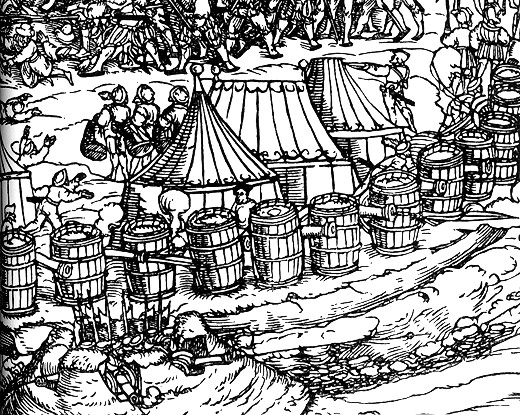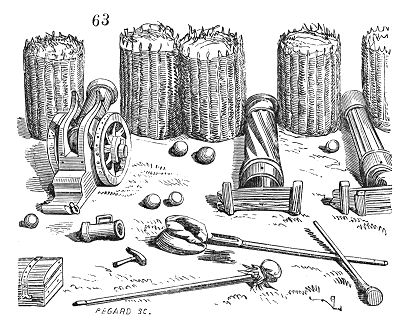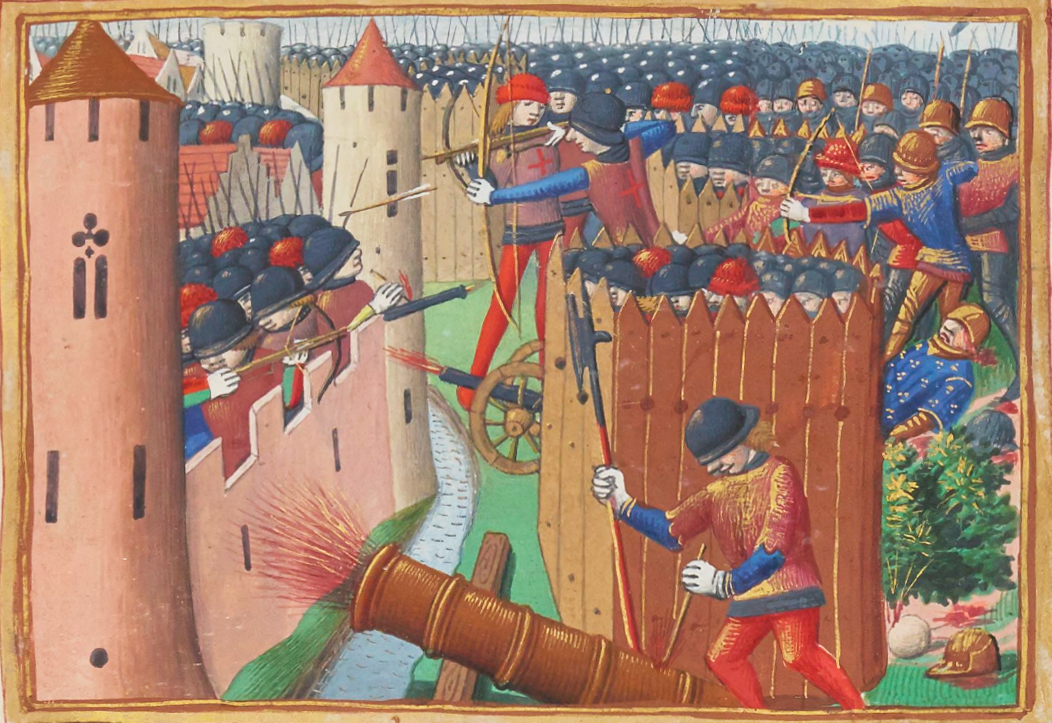Part one Here
In the previous post, I discussed my rationale for the inclusion of firearms within a D&D game. This next post will be featured around the cannon. While I don't expect an adventuring party to go out of their way to haul a cannon around, your players might find themselves in a situation where a cannon might be a viable solution to a problem. Anyways, the following is a continuation of the topic of gunpowder weapons within a fantasy game milieu.
Cannons: Cannons are powerful, deadly, and scary. Luckily they are inconvenient and hard to use without a crew, which usually restricts them to a battlefield, siege, or naval conflict. Essentially a cannon represents a man-made breath weapon that shoots in a line attack similar to a black or blue dragon.
Each cannon ball costs 20gp, and the gunpowder needed is 80gp per shot. Gunpowder for cannons is bought in large containers with the equivalent of 10 shots total and costs 800gp and weight equal to plate armor. The potential explosive damage of each of these containers is a d12 per shot equivalent within it. Save vs. Breath weapon halves damage if it detonates. Which means a full barrel that is detonated deals 10d12 damage on a failed save.
Cannons deal a crazy amount of damage and can plow through multiple people. I’m using the chainmail cannon rules as inspiration for my house rules and modifying them to fit more easily into a b/x style game.
First; Cannons do a flat amount of damage, which will equal the maximum amount a damage from a die amount to represent a “critical hit” similar to my handgonnes house rules where a bullet goes through the target on a damage roll of 12. However, I still have dice rolled for that due to human error under pressure and potential weapon inaccuracies of a handheld cannon while firing at a probably mobile target. Whereas a cannon is mounted onto a mobile stand. This also means if a cannon has a direct shot and hits a person or monster, it will probably kill them so there isn’t a reason to roll dice. I simply don’t like the idea of a mercenary with 6 hit points potentially surviving a cannon blast and I don’t want to offset a minimal amount of damage by throwing a +# increment to the end of a damage die roll. However, if you feel inclined to roll the damage dice, I have included them.
 |
| Citadel miniatures cannon crews |
Second; there normally isn’t an attack roll, the cannon just fires in a line attack and will probably hit someone. Anyone in the pathway of the cannon gets to make a save vs. death ray to avoid being hit. However If you’re going for an intended target then roll a d20 as usually and factor in the range modifiers. On a MISS, you roll a d4 with a 1 is 10ft to the left of the intended target area, a 2 is 5ft to the left, 3 is 5ft to the right, and a 4 is 10ft to the right. Anyone in the flight path makes a save vs. death ray to avoid or is otherwise obliterated.
 |
| An example of cannons protected by gabions |
Third; as mentioned before, a number of people who are hit with a cannon will instantly be killed within the attack range (more on that in a moment). So if a 1hd mercenary is hit, they will be obliterated as would the guy behind him as would any monster with the same equivalent Hit Die until the cannonball hits a natural obstacle or the missile finishes its flight path. This also means you might blow a hole through a troll and they will retreat until the hole heals. Same with a vampire. So a cannon will not wipe out a higher hit die monster with one hit. However, since it functions as a line breath weapon, a save vs. death ray is allowed for anyone within the line of attack is allowed and a success means no damage. So a cannon is all or nothing. I’m not doing a save vs breath weapon because I usually use that for an incendiary or area attacks and not a hard object flying at incredible speed. So, either you’re hit and probably get wiped out, or you hit the deck in the nick of time and it flies over you. Any environmental obstacles would halt it, and the cannon cannot be fired in a vertical arc to get behind cover. Walls of a house would get destroyed but would also stop the missile but cause splinters and rubble to fly everywhere. Thick trees, stones (and stone structures) or other material like that would stop the missile but would certainly damage those objects.
 |
| An example of a manlet |
Fifth; Cannons are a pain to move, requiring at least two people to wheel them
around. Light cannons can be moved at 20ft per round and medium cannons can be moved 10ft per round and takes a full round to move them this distance. Cut this rate in half if there is one person wheeling it around. They can be moved at any point during their reload, but will delay the reload time if they are moved. Heavy cannons are NOT moved in combat rounds, since they are too large and heavy. Usually heavy cannons like bombards are planted on the ground in strategic positions. Moving a bombard requires at least 10 people and 4 beasts of burden to transport it, which also move at a wilderness rate equivalent to 6 miles a day.
 |
| Cannons, artillery crew tools and gabions |
Optional rule: if a higher level character is hit and doesn’t die, it should result in a permanent disfigurement, such as losing a limb. Granted, maybe a cleric can reattach it with a cure wounds spell or grow a new one from the bloody stump with some magical aid over time.
The Dowel Rule: This is taken from Chainmail. Basically you have a dowel rod of a certain length that represents the attack range of the cannon. It is painted with different thickness black and white stripes to represent a cannon’s uneven flight trajectory. A player declares their target that they aim for color and chooses either black or white hoping that they will potentially hit their preferred target in the dowel’s color range they selected. Then they line up the dowel associated with the cannon and see who else is hit with it. Anyone within the line of the dowel that is in the color space chosen by the player is eliminated on a successful fire. So this means the cannon ball rips through people but also will miss some people based on its changing trajectory as it plows through soldier’s bodies. Wild! You also use an additional dowel with a 1-6 1½ inch measurements on it to determine the where the cannon actually ends up firing. Refer to the image taken directly from the chainmail rules to show the aiming dowel





No comments:
Post a Comment